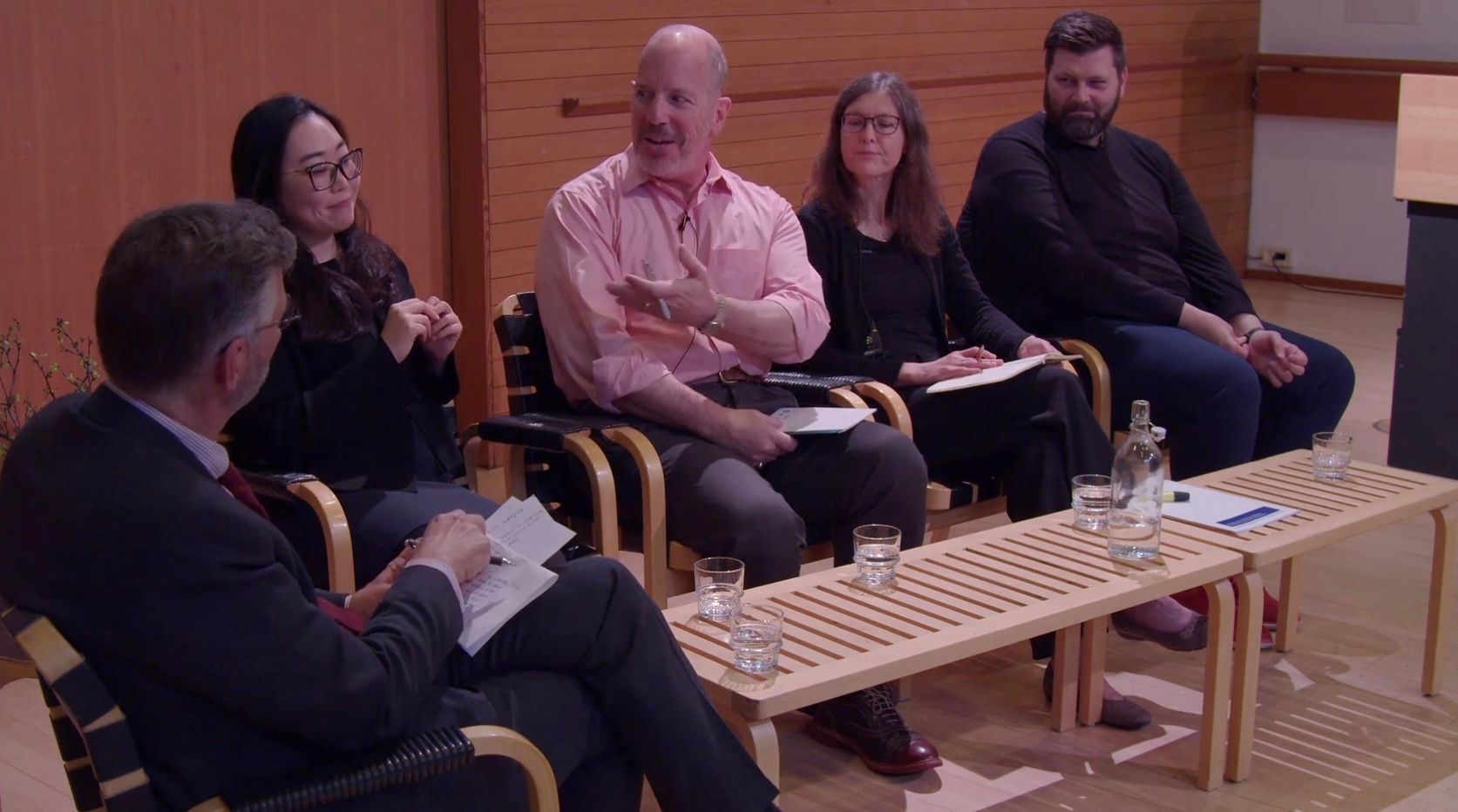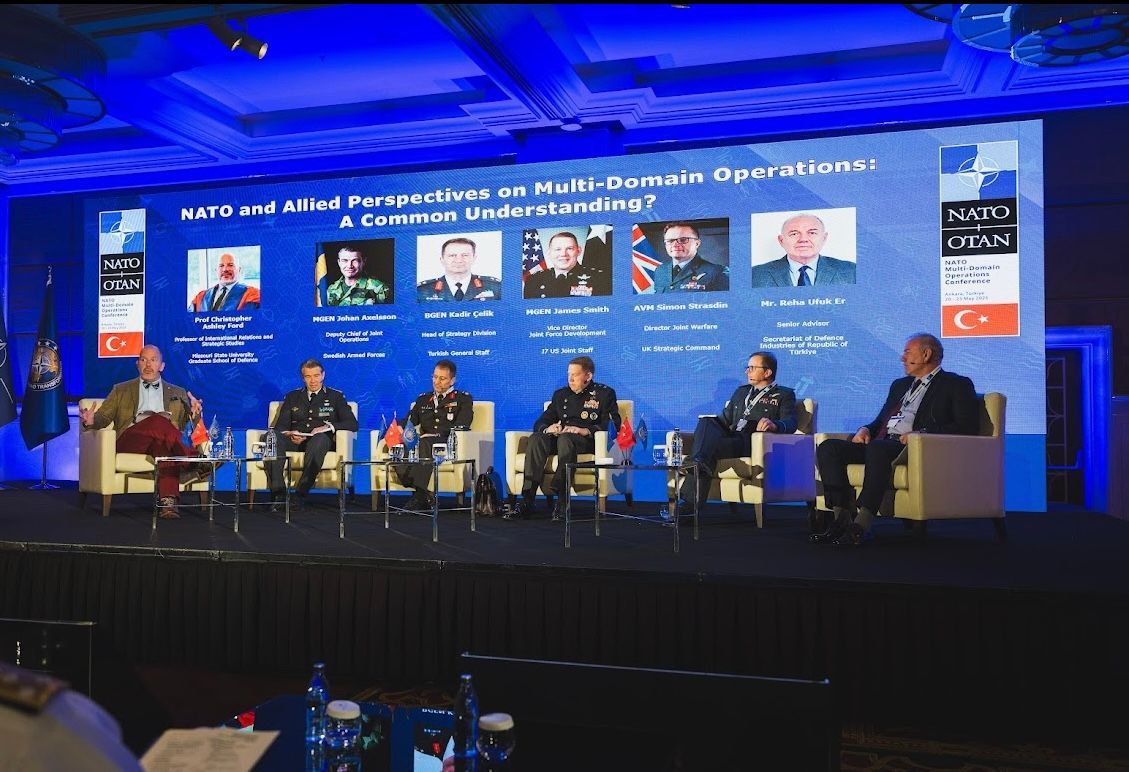Guest Blog: Keith Payne on “Deterrence and Stability Beyond ‘New START’”
A note to NPF readers:
On September 17, 2011, New Paradigms Forum suffered a serious loss of data on account of an unspecified problem in a database belonging to our web hosting service, Network Solutions. As a result, all NPF postings after Dr. Ford’s August 2 essay (“ China and the Cyber Landscape ”) disappeared, and Network Solutions has thus far been unable to restore them. Accordingly, Dr. Ford is rebuilding the missing NPF material from scratch, using the text of the unformatted e-mails sent out periodically to the NPF distribution list. (We regret that the numerous hyperlinks that appeared in the original web postings are not recoverable, however. Some text formatting problems may also remain uncaught below.) Our apologies for any inconvenience this may have caused. We look forward to providing a restored and fully up-to-date NPF site as soon as possible.
ORIGINAL NPF POSTING (August 17, 2011) RESTORED:
Note:
On August 10, NPF published Dr. Ford’s remarks on August 3, 2011, to the Symposium on “21st Century Deterrence Challenges” at the U.S. Strategic Command in Omaha, Nebraska. (His remarks were also reprinted on the Decide America website.) Dr. Keith Payne – who is currently a professor and Head of the Graduate Department of Defense and Strategic Studies at Missouri State University, and who also recently served as a Commissioner on the U.S. Congressional Strategic Posture Review Commission – also spoke at this event, as well as serving as moderator for the panel on which Dr. Ford appeared. Dr. Payne has provided the text of his remarks to NPF, and, with permission from the National Institute for Public Policy, we reprint them below. This text will also appear in a forthcoming issue of Comparative Strategy (volume 31, no. 2).
Deterrence and Stability Beyond New START
by Dr. Keith B. Payne
Thank you. I would like to start by thanking General Kehler and General Desjardins for sponsoring and hosting this outstanding event. It serves the critically important purpose of strengthening our collective understanding of deterrence.
The subject for our panel is the relationship between arms control and deterrence – specifically, how might further arms control measures (post “New START”) contribute to or degrade deterrence stability. We have an exceptional panel today to examine this important subject.
Our panel’s subject matter is timely given the recent convergence of several pertinent developments: (1) the Obama administration’s ambitious arms control and nuclear disarmament agenda; (2) the U.S. need to decide in the relatively near term if/how it will proceed with the development and acquisition of new strategic forces for the 21st Century; (3) Russia’s reported plans to modernize its strategic and tactical nuclear forces – including a new heavy ICBM capable of carrying 10-15 warheads each; and (4) the potential for uncontrolled nuclear proliferation in North Korea and Iran that will put new pressures on U.S. extended nuclear deterrence responsibilities and create new incentives for further nuclear proliferation.
It is in this dynamic context that this panel is called upon to identify how arms control might affect the functioning of deterrence, for good or ill.
There is a long history behind attempts to connect arms control efforts to the prevention of war. For example, early in the nuclear era, Thomas Schelling, Bernard Brodie, and my late boss, Herman Kahn, explored innovative concepts for linking arms control to the goals of deterrence.
These brilliant Founding Fathers helped us to understand that under some conditions, the survivability of our forces could be one of the keys to the functioning of deterrence and also could be promoted by arms control. They gave us the terms and concepts we still use for the subject that is at the center of our panel’s focus, e.g., deterrence, stability, and instability.
For our purposes today, it is critical to understand that their pioneering work was theoretical, context dependent, and ultimately quite speculative. In a conversation with Herman Kahn in 1980, I attempted to impress him by noting that the entire conceptual edifice of nuclear deterrence stability is highly speculative, including the prospective linkage of arms control to stability.
He responded graciously by agreeing, but noting that it is much better to have speculative theories about deterrence and nuclear war than direct empirical evidence.
He, of course, was right. But, the downside to having so little direct empirical evidence to support or invalidate notions about nuclear deterrence stability and its possible linkages to arms control is that speculation on the subject often is offered as if we know with precision the number and types of forces that will increase or decrease the functioning of deterrence. In fact, that level of understanding remains an elusive aspiration.
The noted British deterrence expert, Lawrence Freedman, made this point with his wry statement that, deterrence strategy “is a gift to strategists in that its nature and workings remain so elusive and so imperfectly understood as to permit endless speculation with little danger of empirical refutation.”
This problem posed by the general lack of empirical evidence, and thus discipline in speculation, is compounded by the fact that the Founding Fathers understandably geared their work to the Cold War and the unique U.S.-Soviet geopolitical and military relationship.
They certainly understood that the actual functioning of deterrence depends on who is trying to deter whom, from what, and in what context. Nevertheless, contemporary discussions about arms control and deterrence stability often apply the old, established Cold War terms and concepts to the very different contemporary threat environment without any apparent efforts to identify how the great changes since the Cold War can effect our understandings of deterrence and stability. These terms and concepts meant for a very different time are stretched and misapplied to the point that their original meanings are lost, even though their potency in policy discussions remains high.
In contemporary debate, when the word “stabilizing” is applied loosely to an initiative, it often means little more than “it serves my purpose”; similarly “destabilizing” now often means little more than, “I don’t like it.”
So Panel 2 is here today to make all this right and to solve these fundamental problems. Or at least, we should strive to follow the Hippocratic Oath to “do no harm.” To that end, my suggested guideline for each panel member is to complement your suggestions about stability and arms control with transparency regarding your meanings and evidence. Specifically, whatever your speculation might be regarding the relationships among deterrence, stability and arms control, make sure that you:
1. Define what you mean by stability (i.e., what is it that is stable and from where does this stability come? What conditions do you believe contribute to stability, or detract from it? Why do you believe so? And, what is the basis for your suggested linkage between arms control and stability?).
2. Also, [describe] what evidence – historical or other – supports your contention regarding the nature of stability and its prospective relationship to arms control.
3. Finally, let us know if you believe that your views regarding stability and arms control are shared by our pertinent negotiating partners, and if so, what is your evidence of that consensus?
With those few, easy guidelines, this panel can increase the transparency in contemporary thinking about the nature of deterrence and how arms control can help or hinder stability.
These suggested guidelines may sound wholly academic. In fact, they are entirely hard-headed and pragmatic. Our collective beliefs about arms control and its potential linkages to deterrence, stability, war, and peace are too important to leave to undisciplined speculation; they can have anything but academic consequences. Achieving some intellectual and empirical rigor in our concepts, proposed linkages and evidence may help us to avoid the failed policies of the past that sought in vain to create stability via mutual understandings and agreed limits on forces.
Indeed, in the 1920s and 1930s, considerable loose speculation and policy development in Washington and London on these subjects literally contributed to the causes and trauma of World War II.
In the 1930s, some British leaders hoped that mutual deterrence could be created between Germany and Britain based on reciprocal bomber threats of mutual devastation. Stanley Baldwin’s famous 1932 warning to Parliament that the bomber will always get through carried with it the hope for what we today would call mutual deterrence stability.
In part, on the basis of this hope, Britain’s early focus was on bomber production, vice fighter production, to create that desired bomber deterrent force. Unfortunately, these hopes for mutual deterrence stability followed from an inadequate appreciation of the character and goals of Adolf Hitler and the limits of technology. These hopes finally died in early September 1940, with the beginning of the Blitz and Hitler’s promise to “exterminate” British cities. By mid-September, almost 200,000 Londoners were taking shelter in the Tube at night.
Another pertinent folly was the 1928 Kellogg-Briand Pact. Washington pressed hard in the late 1920s for this international agreement to outlaw aggressive war and to eliminate the use of war “as an instrument of national policy” except in self-defense. Washington hoped that this international pact would help keep America out of another world war. It may seem ironic now to note that Germany and Japan were early signatories to this agreement and that each was soon to initiate highly aggressive wars of conquest.
I will not take the time here necessary to describe the prevalent but ultimately shallow thinking behind the naval arms agreements of the 1920s and 1930s. George Kennan provided the clearest summary of the terrible effect of the US failure to understand the nature of conflict and the potential for arms control to help “stabilize” the avenues to war:
“The evil of these utopian enthusiasms was not only, or even primarily, the wasted timed, the misplaced emphasis, the encouragement of false hopes. The evil lay primarily in the fact that these enthusiasms distracted our gaze from the real things that were happening ... The cultivation of these utopian schemes, flattering to our own image of ourselves, took place at the expense of our feeling for reality. And when the rude facts of the power conflict finally did intrude themselves directly upon us, in the form of enemies we were forced to fight in the two World Wars, we found it difficult to perceive the relations between them and the historical logic of our epoch, because we understood the latter so poorly.”
With self-conscious intellectual rigor and discipline, perhaps we will be able to achieve that which is possible via arms control and to avoid repeating the mistakes of the 20s and 30s that followed from loose speculation about how to promote stability.
With that sanguine introduction and those suggested guidelines, I would like to turn the rest of the discussion over to our august panel.
-- Keith Payne
(Copyright National Institute for Public Policy, 2011. This article will appear in Comparative Strategy, Volume 31, No. 2, forthcoming.)








